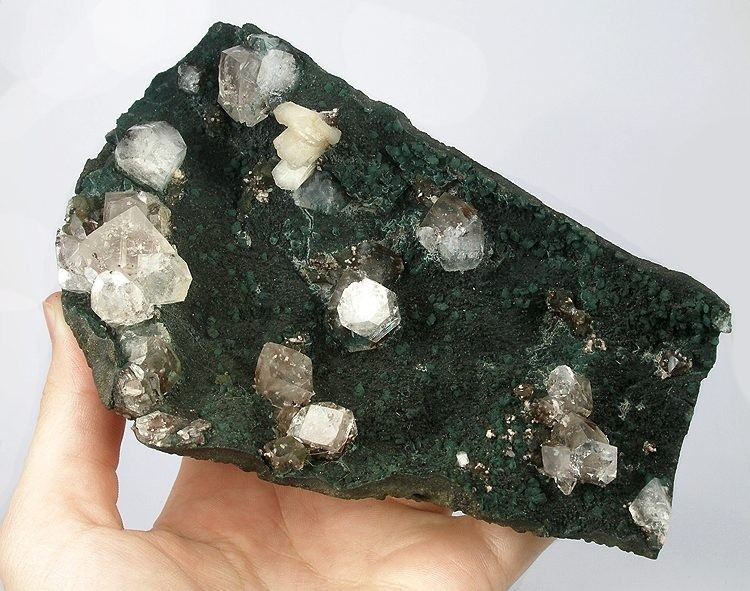Category MicasPhyllosilicate Space group C2 | Crystal system Monoclinic | |
 | ||
Formula(repeating unit) K(Mg,Fe)(Fe,Al)[Si4O10](OH)2 Crystal class Spheroidal (2)(same H-M symbol) | ||
Celadonite is a mica group mineral, a phyllosilicate of potassium, iron in both oxidation states, aluminium and hydroxide with formula: K(Mg,Fe2+)(Fe3+,Al)[Si4O10](OH)2.
It crystallizes in the monoclinic system and usually forms massive aggregates of prismatic crystallites or in dull clay masses. It is soft with a Mohs hardness of 2 and a specific gravity of 3. Typically occurs as dull gray-green to bluish green masses. It forms vesicle fillings and linings in altered basaltic lavas.
It was first described in 1847 on Monte Baldo, near Verona, Italy. The name is from the French celadon, for sea-green. It is one of two minerals, along with glauconite, used in making the pigment known as green earth.
References
Celadonite Wikipedia(Text) CC BY-SA
